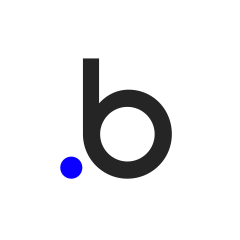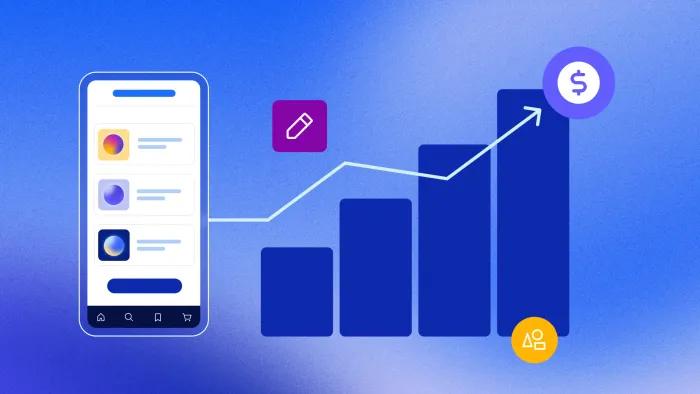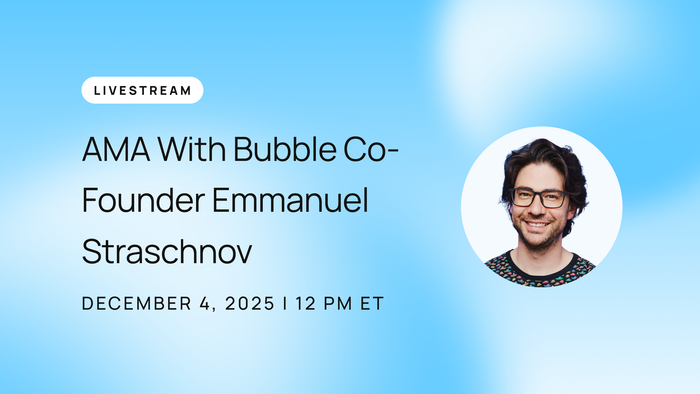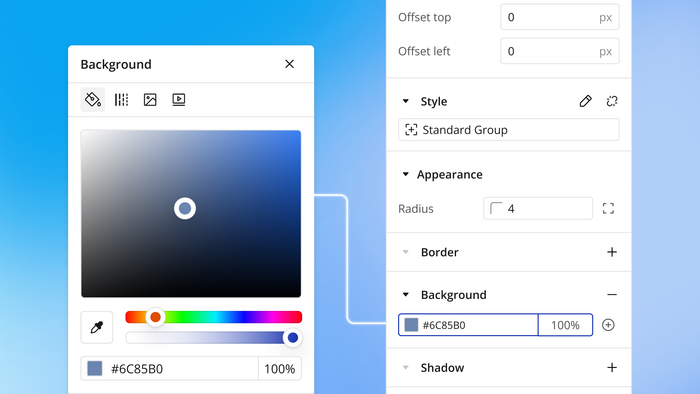Whether you’re building your first app on Bubble, turning an internal tool into a customer-facing product, or rolling out a major new feature, how you introduce your app to the world matters just as much as what you’ve built.
A go-to-market (GTM) strategy is your blueprint for doing that well. It helps you define your audience, choose the right channels, and align your team around a clear set of objectives. It’s a cross-functional approach that covers positioning, pricing, distribution, and long-term retention, all tailored to your product and the people you’re trying to reach.
In this guide, we’ll break down what a GTM strategy is, why it’s especially important for launching an app, how to build one, and the different kinds of GTM strategies to consider.
What is a GTM strategy?
A go-to-market (GTM) strategy is a comprehensive plan for introducing a new product or service to the market, or for bringing an existing product to a new market. In the context of apps, this can include introducing a brand-new app or even rolling out a new app feature.
The GTM strategy is how you connect what you’ve built with the people it’s meant for, and it’s more than just promotion. It encompasses all aspects of how your app enters the market:
- Who it’s for (your target audience)
- What it solves (problem-solution fit)
- Why it’s different (positioning and value proposition)
- How it’s delivered (distribution channels and sales model)
- How you’ll grow (acquisition, retention, and feedback loops)
Although closely related, a GTM strategy is different from a marketing plan. While marketing plans focus on the messaging, campaigns, and content used to drive awareness and demand, GTM strategies outline a broader framework that ensures your marketing, product, sales, and support efforts are all working together.
It’s a tool for internal alignment. A good GTM strategy helps your team rally around shared goals, clarify roles, and make better decisions across departments, setting the stage for a successful product launch and long-term traction.
Why your app needs a GTM strategy
Building an app is the easy part (especially when using an AI-powered no-code development platform like Bubble). But finding an audience and achieving success with that app is much more difficult. According to Gartner, less than 0.01% of apps are ultimately considered financially successful by their developers.
Most unsuccessful apps don’t fail because of bad ideas. They fail because they were never able to gain traction. In today’s crowded app stores and digital ecosystems, even great products can get lost without a clear path to market.
Your GTM strategy exists to give you the edge, allowing your app to stand out and be noticed by the right people. It helps you avoid guesswork by defining how your app solves a real problem, who it’s for, how to reach them, and how to keep them engaged.
For solo founders, small startups, and resource-limited teams, a GTM strategy is even more essential. When you don’t have the budget to brute-force growth or the brand recognition of larger players, you need clarity and focus. A well-defined GTM plan helps you prioritize the right channels, maximize limited resources, and make the best possible decisions.
And it isn’t just about launch day. Your GTM strategy lays the foundation for long-term growth, giving you a repeatable framework for attracting and retaining users as your product evolves. It helps ensure that your early momentum turns into sustainable performance.
How to create a GTM strategy for your app: 9 steps
Some GTM strategies span dozens of pages and months of planning. Others are lightweight and to the point, especially for early-stage startups or solo founders. What matters most is that your strategy is clear and actionable. We’ll walk you step-by-step through the process, from defining your product to preparing for launch and beyond.
1. Define your product and its value proposition
Before you go to market, you need to understand what you’re offering. Not just how your app functions, but what problem does it solve, and why is your solution better than the alternatives?
Your value proposition needs to simply and directly articulate what sets your app apart — ease of use, affordability, unique features, superior performance, or something else. This core message will shape every other part of your GTM plan.
For example, imagine you’re building an app for freelancers that gives them a customizable client portal where they can share project updates, send messages, and collect payments. It saves them from the hassle of juggling emails, spreadsheets, messaging tools, and separate invoicing platforms, and helps them offer a more professional experience to their clients.
The core value proposition might be: “A simple, all-in-one client portal that helps freelancers look professional and save time on admin.”
2. Identify your target audience and build personas
Knowing your users is just as important as knowing your product. You need to understand who they are, what motivates them, and what stands in their way.
Gathering this information will require some research like:
- Talking directly to users. Conduct interviews, surveys, or user testing sessions with people in your target market. Ask about their workflows, goals, and frustrations.
- Reviewing competitor feedback. Check app store reviews, community forums, Reddit threads, or social media mentions to see what users are saying about similar products.
- Using audience research tools. Platforms like SparkToro, Statista, or Meta’s Audience Insights can help you learn where your audience spends time and what they care about.
- Looking at your own data. If you already have a waitlist, email list, or social followers, analyze their behaviors and preferences to find patterns.
Then turn those insights into buyer personas: fictional profiles that represent key segments of your audience. Each persona should reflect how your users will actually interact with your app. What device are they using? Where do they spend time online? What tone of voice and visuals are most likely to resonate?
Clear, actionable personas don’t just inform marketing—they also shape product decisions, messaging, onboarding, and even pricing.
To continue with the client portal example, one persona might look like this:
Samantha is a 32-year-old freelance graphic designer who works from her home studio. She uses a MacBook and iPad Pro, finds clients through referrals, and spends time on Instagram and Behance. She’s drawn to clean, modern design, and she values tools that make her look professional without adding complexity. She’s tired of using a different process for each client and has had trouble keeping up with proposals, invoices, and client interactions.
3. Conduct a competitive analysis
To position your app effectively, you need to understand what it’s up against. A good competitive analysis identifies opportunities for your app to stand out.
Start by documenting your direct and indirect competitors. Look in the app stores, browse product directories like Product Hunt or G2, and check out Reddit, Quora, or industry-specific forums to see what tools your target users are already talking about.
For each competitor, examine:
- Features: What do they offer? What do users love or complain about?
- Pricing: What and how much do they charge? Are there free tiers, subscriptions, or one-time fees?
- User experience: Download and use the apps yourself. How intuitive are they? What’s the onboarding process like?
- Marketing and positioning: How do they talk about themselves? Who are they targeting?
- User sentiment: Read reviews on Apple’s App Store, Google Play, and social media. What pain points or unmet needs frequently come up?
Summarize your findings to spot patterns. Maybe your competitors all ignore a specific niche, or perhaps their onboarding is clunky and confusing. These gaps are opportunities to offer a stronger experience or clearer value.
For example, our freelancer client portal might be competing with generic project management tools, complex client communication suites, and even spreadsheet systems. If those tools feel bloated, expensive, or too agency-focused, that opens a clear opportunity to position your app as lightweight, freelancer-friendly, and easy to use out of the box.
4. Choose your monetization model
Your app monetization model determines how you’ll generate revenue, and it also shapes how users engage with your app. Some of the most common monetization models for apps include:
- Ad-supported: Free for users, monetized through ad impressions or clicks
- Freemium: Free to use, with paid upgrades or advanced features
- One-time payment: A flat fee to download and use the app
- Subscription: Recurring revenue through monthly or annual plans
- In-app purchases: Microtransactions for additional features or content
- Hybrid: A combination of two or more of these models
Each model comes with trade-offs. Freemium makes it easy to attract users, but requires a clear path to paid conversion. Ads can subsidize free use but may hurt user experience. Subscriptions offer reliable revenue, but demand long-term value. And one-time fees are simple but limit recurring revenue.
This means you need to choose intentionally. Look at how your closest competitors do pricing, assess your users’ willingness to pay, and consider how each model supports your product’s long-term role in users’ lives.
For our example client portal app, a tiered freemium model might make the most sense. Offer a free plan with project updates and messaging, but keep advanced features like invoicing and payment collection behind a paid subscription. This lets freelancers try the platform risk-free, then upgrade as their needs grow or as they learn to love the app.
5. Select your marketing and distribution channels
You need your app to reach the right users, in the right places, with the right message. That means choosing your marketing and distribution channels intentionally, based on where your users are located and how they make decisions.
Some of the most common and effective channels for app launches include:
- App store optimization (ASO): Optimize your app listing with relevant keywords, compelling screenshots, and a clear description. This improves visibility and drives organic downloads.
- Content marketing: Build SEO momentum and establish credibility with blog posts, videos, and guides that solve user problems or showcase use cases.
- Paid ads: Get in front of your target audience on platforms like LinkedIn, Instagram, or Google with focused campaigns.
- Influencer marketing: Collaborate with creators your users already trust to introduce your app in an authentic way.
- Social media: Use platforms like Facebook, Twitter, or LinkedIn to build a following, engage potential users, and share updates.
- Landing pages: Create a central hub to explain your app, capture emails, and drive early signups.
Don’t plan on using every channel. Instead, focus on a few high-impact channels that align with your audience and your goals. Rely on the research you conducted in step two to guide your choices.
For our example app, you might prioritize Instagram ads targeting freelance creatives, guest posts on design blogs, and influencer partnerships with freelance coaches. A clean, high-converting landing page can collect early access signups, while strong ASO ensures discoverability once the app goes live.
6. Run beta tests and optimize onboarding
Before launch, test your app with real users. Structured beta testing helps uncover bugs, friction points, and confusing flows that internal testing might miss. Use what you learn to make focused improvements ahead of your wider release.
Equally important is onboarding. A smooth, intuitive first-time experience makes a strong first impression, helping users quickly understand the value your app provides. But to know if it’s working, you’ll need real user feedback. So test the process and be ready to make adjustments.
For our example client portal app, you might beta test with a small group of freelance designers and writers. Observe how they set up their first project, where they hesitate, and what features confuse them. Based on that, you might simplify the project setup flow, add tooltips to the invoicing section, and tweak your welcome message to speak more directly to freelancers’ needs.
If you’re building on Bubble, you have access to a variety of tools to help you test, debug, and refine your app. You can add different users with various levels of access, submit bugs directly, use the native mobile debugger to identify the source of unexpected behavior, and make quick changes to your app with the visual editor.
7. Set measurable goals and track your KPIs
In order to track your app’s success, you first need to define what success looks like. Set clear objectives for your launch, and make sure you have the tools in place to track them.
Use the SMART framework (specific, measurable, achievable, relevant, and time-bound) to shape your goals, and choose KPIs that align with them. Common metrics for apps to consider include:
- Downloads: The number of people installing your app
- Activation rate: The percentage of users who complete a key first action (like setting up a profile or creating a project)
- Conversion rate: The percentage of users who take a desired business action (like upgrading to a paid plan)
- Retention rate: The percentage of users who return and continue using your app after a set period
- Churn rate: The percentage of users who stop using your app or cancel a subscription (the inverse of retention)
- Average revenue per user (ARPU): How much revenue each user generates on average
- Customer acquisition cost (CAC): How much you spend to acquire a single user
- Customer lifetime value (LTV): The total revenue you expect from a user over their entire relationship with your app
- Daily/weekly/monthly active users: A snapshot of how many people actively engage with your app on a regular basis
For our example app, a SMART goal might be: “Reach 1,000 downloads and a 40% activation rate within the first 30 days of launch.” To support this, you’d track activation by seeing how many users create their first client portal.
For apps on Bubble, you can easily track these kinds of user activity by integrating with analytics plugins like PostHog.
8. Prepare for customer support and feedback
After your app launches, the real fun begins. Early feedback can highlight bugs, reveal unmet needs, and shape your next round of updates. You’ll need to be ready to respond to questions, solve issues, and make adjustments fast.
Even if your team is small, it’s important to provide support systems for your users. You can do this with a simple help center, a dedicated email, or even a feedback form built into your app. You should also create proactive paths for feedback, like in-app prompts or user surveys, to intentionally gather insights as you grow.
For example, that might mean sending out a short onboarding survey after the first week.
9. Align your team and stay flexible
A GTM strategy only works when everyone is moving in the same direction. Make sure product, marketing, sales, and support are aligned around shared goals, with clear ownership and consistent communication. If you’re a solo founder or working with a small team, you may not need to coordinate across departments, but you still need to make sure your efforts are all working toward the same goals.
And it’s crucial to be adaptable. Your GTM strategy should be a living document. Be ready to adjust as you learn what resonates with your user base, what falls flat, and how user needs evolve post-launch.
For example, that might mean shifting focus from attracting new users to improving retention if feedback shows people love the app but drop off after a few weeks.
On Bubble, you’re well positioned to adapt quickly. Bubble’s visual editor and version control tools make it easy to adjust your app on the fly, whether you’re refining a feature, fixing a bug, or updating your onboarding flow. You don’t need to wait on a development cycle or submit new versions to the app store just to test a change. That agility makes it much easier to stay responsive to what your users need.
Different kinds of GTM strategies for apps
As you craft your GTM strategy, it’s important to recognize that no two apps, teams, or audiences are exactly alike. So the right GTM strategy depends on what you’re building, who it’s for, and how your users prefer to engage.
There are several popular approaches to GTM strategy, and in many cases, you won’t rely on just one of them. Instead, you’ll combine elements to match your product and goals. The key is to understand the major GTM strategies and how they work, so you can make informed decisions about which ones to lead with, which to layer on later, and how they should all work together.
We’ll walk you through five of the most common types of GTM strategies for apps, with guidance on when and why to use each.
Product-led growth
Product-led growth (PLG) lets your app do the heavy lifting. Rather than relying on a sales team or big marketing campaigns, you focus on delivering so much value in the product experience itself that users naturally adopt, share, and upgrade.
This approach can work well for mobile and SaaS apps with intuitive onboarding and clear user outcomes. Freemium models, viral loops, in-app upgrades, and self-service onboarding are all hallmarks of PLG.
If you’re building a tool that solves a common pain point and lends itself to word-of-mouth, PLG can be a cost-efficient and scalable way to grow from your first 100 users to your first 10,000 — especially if you already have your audience’s attention.
Inbound marketing
Inbound marketing attracts users by creating content and experiences that solve their problems before they even know your app exists. Rather than interrupting them with ads, you earn their attention through SEO, blog posts, social media, email newsletters, webinars, and other valuable content.
This strategy works best when your target audience is already searching for information related to your product category, especially if your app solves a well-defined problem or serves a niche market.
The key to successful inbound marketing is the ability to add unique insights. In a world flooded with low-quality and often AI-generated content, you can stand out by presenting information in a new way, offering a personal perspective, or providing original research.
Outbound marketing
Outbound marketing goes directly to users, rather than waiting for them to find you. That could mean cold emails, paid ads, direct outreach on social media, or even events and sponsorships. It all depends on where your audience is most reachable.
While outbound marketing tends to require a bigger budget, it can be a faster path to gaining traction, especially if you’re targeting a specific buyer profile or niche. It’s particularly useful in the early stages of a launch, when you need quick feedback, early adopters, or proof of demand.
To be effective, outbound efforts need to be tightly targeted, clearly messaged, and tracked closely. Otherwise, you risk spending time and money on the wrong audience.
Sales-led growth
Sales-led growth puts your sales team front and center. Instead of relying on users discovering and adopting the product on their own, your strategy revolves around guiding high-value prospects through a personalized buying journey.
This approach is common for apps with higher price points, more complex onboarding or integration needs, or multiple stakeholders involved in the buying decision. You see it used most often in enterprise or B2B contexts. It typically involves structured outreach, demos, proposals, and a well-defined sales process.
Sales-led growth often works in tandem with other strategies, like inbound content to generate leads or a product-led motion to seed early adoption within target accounts. If your app solves a complex problem or has a long sales cycle, a sales-led approach can help you close bigger deals and build long-term customer relationships.
Community-led growth
Community-led growth relies on building a group of engaged users who support, promote, and even help shape your app. This could happen in a public forum, a Discord server, a subreddit, Facebook groups, or on platforms like X or LinkedIn — wherever your users naturally gather and connect.
When done well, users help each other, provide feedback, and amplify your message far beyond what traditional marketing can achieve. It also builds loyalty. People are more likely to stick with an app when they feel like they’re part of something bigger.
This strategy is especially effective for apps that serve creators, developers, or niche interest groups, but it’s increasingly being embraced across categories. Just keep in mind that communities don’t grow overnight. They take time, care, and a genuine investment in listening to and empowering your users.
Bring your app to market faster with Bubble
A strong GTM strategy is essential — and so are the tools you use to build and launch. With Bubble, you can turn your idea into a fully functional app without writing code, and adapt quickly as your go-to-market plan evolves.
Bubble’s AI-powered no-code development platform lets you quickly build and customize your app’s interface, test and iterate in real time, and deliver seamless updates, so you can keep improving in response to user feedback. Get started for free →
Build for as long as you want on the Free plan. Only upgrade when you're ready to launch.
Join Bubble






